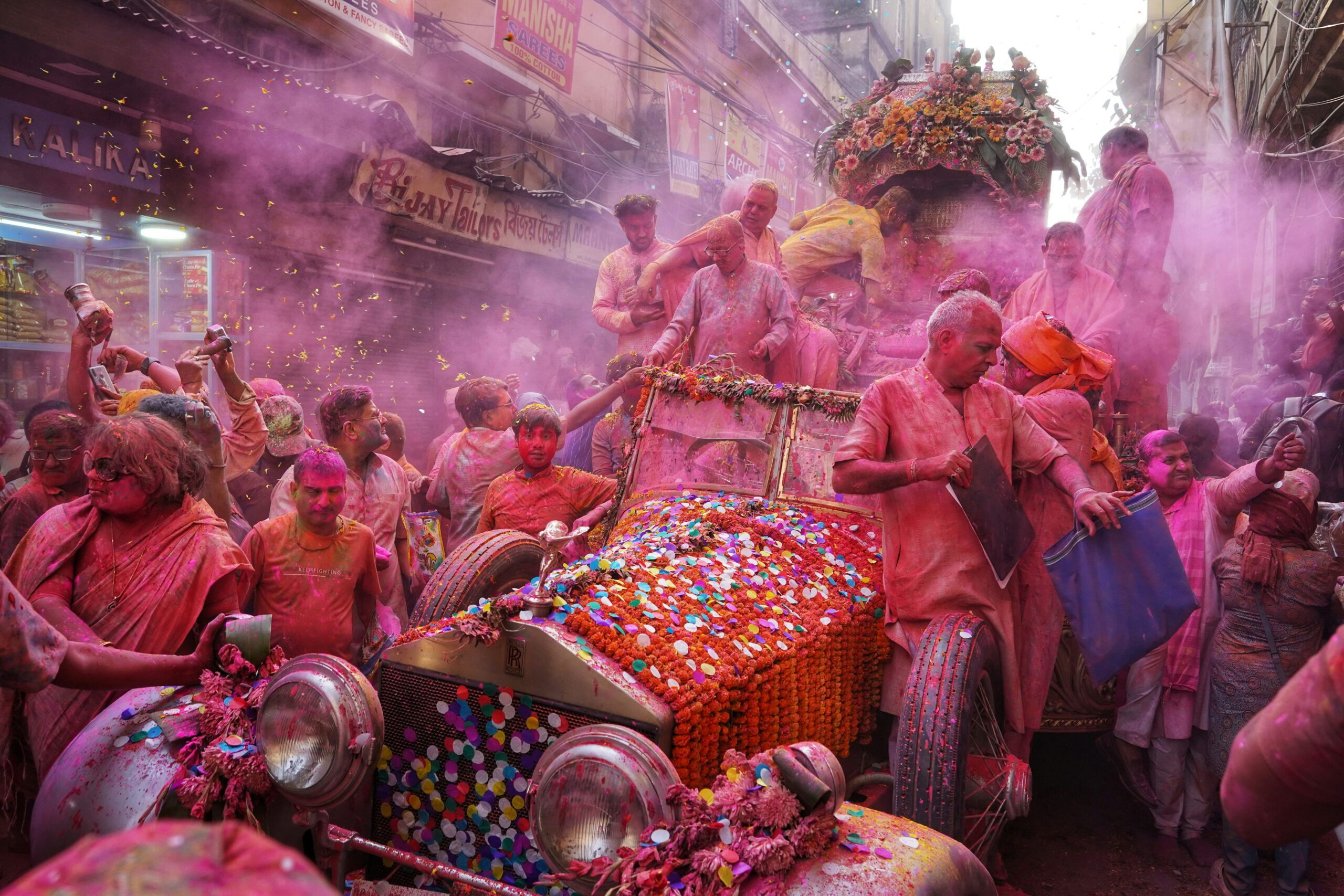
India is a land of diverse cultures and religions, and as a result, there are numerous festivals celebrated throughout the year. Here’s a list of some prominent festivals celebrated in India along with brief descriptions. This isn’t intended to be an exhaustive list so if you have one you would like mentioned please add it in the comments below :
- Diwali (Deepavali): Known as the festival of lights, Diwali is one of the most widely celebrated festivals in India. It signifies the victory of light over darkness and good over evil. People decorate their homes with oil lamps (diyas), let off fireworks, exchange sweets, and offer prayers to Goddess Lakshmi, the Hindu goddess of wealth and prosperity. Diwali typically takes place in October or November, depending on the Hindu lunar calendar.
- Holi: Also known as the festival of colors, Holi marks the arrival of spring and the triumph of good over evil. It is generally celebrated in March. People celebrate by throwing coloured powders and water at each other, dancing, singing, and enjoying festival foods and sweets.
- Eid al-Fitr: Celebrated by Muslims across India, Eid al-Fitr marks the end of Ramadan, the Islamic holy month of fasting. It is a time for prayer, feasting, and giving to charity. Families come together to share special meals and exchange gifts. The date follows the lunar Islamic calendar and varies each year.
- Navaratri/Durga Puja: Navaratri, meaning “nine nights,” is a Hindu festival celebrated in honor of the divine feminine goddess Durga. It involves fasting, prayer, and dance performances (Garba and Dandiya) in various parts of India. In the eastern state of West Bengal, Durga Puja is a major festival where elaborately crafted idols of Goddess Durga are worshipped. The festival usually takes place in September or October.
- Eid al-Adha: Also known as Bakrid or the Festival of Sacrifice, Eid al-Adha commemorates the willingness of Ibrahim (Abraham) to sacrifice his son as an act of obedience to God. Muslims offer prayers, sacrifice animals, and distribute the meat among family, friends, and the needy. This event also follows the Islamic lunar calendar and usually occurs a few months after Eid al-Fitr.
- Ganesh Chaturthi: A Hindu festival honoring the birth of Lord Ganesha, the remover of obstacles. It involves the installation of elaborate clay idols of Lord Ganesha in homes and public pandals (temporary structures), followed by worship, cultural events, and immersion of the idols in water bodies. Lasting for 10 days it is usually celebrated in August or September, .
- Christmas: Celebrated by Christians across India on the 25th December, Christmas commemorates the birth of Jesus Christ. People decorate their homes with Christmas trees, exchange gifts, attend church services, and indulge in festive meals and sweets.
- Raksha Bandhan: A Hindu festival that typically happens in August, celebrating the bond between brothers and sisters. Sisters tie decorative threads (rakhi) around their brothers’ wrists, symbolizing their love and protection. Brothers, in return, vow to protect and support their sisters.
- Makar Sankranti/Pongal: Celebrated in different parts of India under various names, Makar Sankranti marks the transition of the sun into the zodiac sign of Capricorn on so takes place on January 14th or 15th. It is a harvest festival characterized by kite flying, bonfires, traditional rituals, and the preparation of special dishes like sweets made from jaggery and sesame seeds.
- Onam: A harvest festival celebrated primarily in the southern state of Kerala. It commemorates the homecoming of the mythical King Mahabali and is marked by elaborate feasts (Onam Sadhya), traditional dances (Puli Kali and Kaikottikali), and floral decorations (Pookalam). It is celebrated in august or September.
These are just a few examples of the diverse festivals celebrated in India, reflecting the rich cultural tapestry of the country.
*Photo by Dibakar Roy on Unsplash

Share this Story
